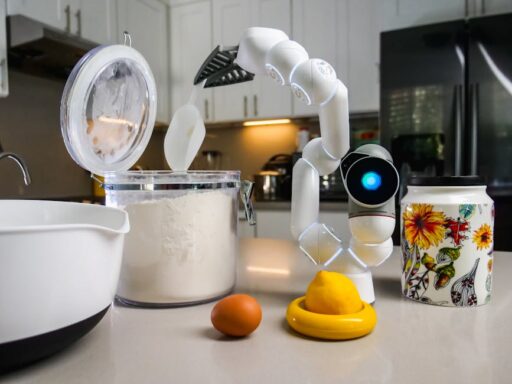ClickUp 4.0: How AI Assistants Streamline Work and Cut Context‑Switching
ClickUp’s 4.0 release marks a significant step toward a unified productivity platform powered by AI. The update centers on two classes of AI assistants that sit across the interface: proactive channel agents that surface relevant answers and a general-purpose assistant called Brain that generates ideas, performs tasks, and synthesizes information.
What can ClickUp’s AI assistants do?
In simple terms: a lot. The new assistants are designed to reduce context switching, automate routine work, and make knowledge more discoverable. Here are the headline capabilities optimized for teams:
- Proactive channel assistance: the agent scans conversations and internal knowledge to suggest answers and pull supporting documents.
- General-purpose ‘Brain’ assistant: generates drafts, proposes ideas, schedules meetings, updates tasks, and creates comments or new tasks on demand.
- Live notetaking and SyncUp integration: AI notetakers can capture meeting audio, transcribe sessions, and distribute summarized notes to participants.
- Unified enterprise search: AI can query internal sources to surface relevant files, documents, and past discussions from across integrated tools.
- Automation-aware scheduling: assistants can analyze team availability and adjust meeting times or task due dates when priorities change.
How ClickUp 4.0 organizes work and knowledge
The platform focuses on three practical problems that slow teams down: scattered information, repeated manual tasks, and fragile handoffs. ClickUp 4.0 takes a primitive-driven approach—combining tasks, docs, and tables with AI that understands context—so that work artifacts become actionable by agents.
Agents across channels
Channel agents live where conversations happen. Instead of forcing users to search multiple apps, these assistants proactively identify questions and pull answers from the company knowledge base and connected storage. That reduces time spent hunting for files and keeps context in the conversation thread.
Brain: the sidebar-assistant that acts on your behalf
Brain is a persistent assistant accessible in the sidebar across the ClickUp interface. It can:
- Draft messages, documents, or task descriptions based on brief prompts.
- Perform scheduling actions—proposing meeting times based on teammate availability and then creating events.
- Analyze reports and produce executive summaries or highlight risks and blockers.
- Invoke web lookups and integrated tool data to enrich responses when needed.
Because Brain can act directly—creating tasks, adding comments, and updating records—teams see faster completion cycles for routine coordination work.
Why this matters: business benefits and measurable outcomes
Early adopters of integrated AI assistants report three consistent benefits:
- Fewer context switches: employees spend less time moving between email, file stores, calendars, and chat to find answers.
- Faster meeting follow‑up: automated notetaking and task extraction turn meeting discussion into assignable work items almost instantly.
- Improved knowledge reuse: searchable answers and AI summaries reduce duplicated work and onboarding friction.
These gains are particularly relevant for organizations scaling knowledge work. For deeper context on how memory and state improve LLM-driven apps, see our analysis of AI Memory Systems: The Next Frontier for LLMs and Apps.
What about security, privacy, and governance?
Rolling AI assistants into the heart of collaboration raises legitimate governance questions. Responsible deployment requires:
- Clear data access controls: restrict which assistants can query sensitive repositories.
- Audit logs and change tracking: record assistant actions that create or modify tasks and documents.
- Model output validation: human review workflows for high‑risk decisions or external communications.
Companies should also align AI behavior with compliance needs and build playbooks for when the assistant recommends external web content or third‑party data.
How do teams adopt ClickUp AI assistants effectively?
Successful adoption is part technology and part change management. Practical steps include:
- Start with pilot teams: choose one or two groups that have high collaboration overhead and measurable KPIs (e.g., time to close tickets).
- Define guardrails: set permissions for which integrations the assistants can access and which actions they can perform automatically.
- Train users: short onboarding sessions focused on prompts, expected behaviors, and how to correct or override assistant actions.
- Measure impact: track metrics such as time saved on search, average meeting follow‑up time, and task completion velocity.
Adopting AI assistants also benefits from linking AI output to established workflows—embedding summaries into ticketing systems and surfacing task recommendations directly in project views.
How will AI assistants change team communication and collaboration?
AI assistants shift the burden of routine coordination from humans to software. Over time, that will reshape roles and expectations: managers will spend less time chasing status updates and more time on strategy; individual contributors will spend less time reorienting to context and more time on creative problem solving. For teams rethinking customer-facing processes, our piece on Embracing AI: The Transformation of Customer Support provides relevant examples of AI driving operational change.
What integration and extensibility considerations matter?
Connectors are the backbone of useful assistants. ClickUp 4.0 emphasizes integrations with file services, calendar systems, design tools, and mail platforms so agents can assemble a complete picture of context. When evaluating integration strategy, consider:
- Depth of access: can the assistant read and act, or only surface links?
- Latency and freshness: how quickly does the assistant index new documents and conversations?
- Customization: can teams tune the assistant’s tone, default actions, and relevance ranking?
Enterprises should also review vendor SLAs and data residency options when connecting core systems.
Common pitfalls and how to avoid them
Even well‑designed assistants can fail if teams don’t anticipate common issues:
- Over‑automation: letting the assistant take irreversible actions without human sign‑off.
- Poor search relevance: noisy knowledge bases produce low‑value suggestions—curation is essential.
- Trust gaps: users will ignore assistant output if it’s frequently incorrect or vague.
Mitigation strategies include conservative default permissions, continuous feedback loops from users, and investing in knowledge management to improve result quality.
How does ClickUp 4.0 compare to broader enterprise AI trends?
ClickUp’s strategy—embedding AI across tasks, docs, and comms—reflects a wider industry shift toward agentic workflows and memory-enabled systems. Organizations are moving beyond single-purpose chatbots to assistants that can maintain state, act on behalf of users, and integrate with enterprise data. For a deeper look at how AI is reshaping enterprise operations and infrastructure, see AI in Enterprise: Navigating Opportunities and Challenges.
Key takeaways
ClickUp 4.0 bundles two complementary assistant types—a proactive channel agent and the omnipresent Brain assistant—together with live notetaking and unified search. The result is a platform designed to reduce friction, automate routine coordination, and surface institutional knowledge faster.
For teams, the practical benefits include fewer context switches, faster meeting follow‑ups, and better reuse of knowledge. For leaders, the release highlights the need to pair AI capabilities with governance, measurement, and change management.
Next steps for teams evaluating ClickUp AI assistants
If your organization is considering ClickUp’s AI features, start small, measure impact, and prioritize integrations that unlock the most context for your workflows. Effective pilots focus on specific pain points—e.g., reducing meeting follow‑up time or improving onboarding speed—and use those metrics to justify broader rollout.
Want to explore how AI assistants could change your team’s workflow? Read our related analysis and case studies, subscribe to updates, or request a pilot checklist to get started.
Call to action: Stay ahead of the AI productivity curve—subscribe to Artificial Intel News for in‑depth coverage, how‑to guides, and deployment checklists that help teams adopt AI assistants responsibly and effectively.





